Editor's note: In the context of Vietnam's goal of becoming a developed, high-income country by 2045, the race for strategic technology and attracting elite talent has become a decisive front. What are the "bottlenecks" and what is the way out for Vietnam?
The article by Dr. Ha Huy Ngoc, Director of the Center for Research on Local and Territorial Economic Policy and Strategy (Vietnam and World Economic Institute) frankly outlined the inherent challenges and proposed a strategic roadmap with breakthrough solutions.
Strategic technology is helping to reshape the conditions needed for countries to achieve their goal of becoming high-income economies, with a skilled workforce as the primary lever.
A prerequisite for success in the transition period and moving up the value chain is that economies need to form a large-scale, highly skilled workforce capable of attracting investment and promoting innovation.
The Vietnamese government has recognized that, so recent policy directions have clearly shown priority for science , technology and especially human capital, considering these as key drivers for growth. In particular, the pillars of innovation - talent and elite are the key for Vietnam to realize the leap to become a modern, high-income economy by 2045.
Where is Vietnam in the race to attract talent?
The race is fierce in strategic and emerging technology industries, where success depends largely on investment in innovation and human capital.
In fields ranging from AI to biotechnology and semiconductors, leading countries boast deep pools of skilled talent, along with the highest and most sustained levels of spending on research and development (R&D).
In all 10 “strategic and critical technology” areas identified globally, most of which overlap with Vietnam’s priority areas, a solid foundation of researchers, engineers and technical experts supported by abundant capital is crucial to ensuring competitiveness.
Geographically, Vietnam is located at the intersection of the East Asia region of competitive innovation - the region that concentrates all five of the world's largest science and technology (S&T) clusters. The five economies in the East Asia region include China, South Korea, Japan, Singapore and Taiwan (China) - all of which are global leaders in the fields of artificial intelligence (AI), semiconductors and biotechnology.
This geographical proximity is a “double-edged sword”: On the one hand, Vietnam can exploit knowledge networks and value chains in the region; on the other hand, it faces competition as neighboring countries such as China, South Korea and Singapore are leading in attracting talent and investing in technology.

Hoa Lac High-Tech Park, Hanoi (Photo: Ha Phong).
Over the past decades, these economies have proactively built up a large pool of scientific and technical talent and invested heavily in higher education (HE) and R&D, transforming themselves from technology importers to technology leaders. Furthermore, in all these strategic technology ecosystems, HEIs play a central role as anchors for talent and innovation.
In China's major innovation hubs, such as the Shenzhen, Hong Kong, Guangzhou, and Beijing corridors, higher education institutions such as Shenzhen University, Tsinghua University, and Peking University play a key role, providing highly qualified graduates and hosting R&D labs in collaboration with companies such as Huawei and SMIC.
In South Korea, the Seoul-Incheon Tech Cluster is formed around Seoul National University and the “Tech Valley” includes higher education institutions such as KAIST. These examples show that talent centers and innovation centers often go hand in hand, and leading higher education institutions are the indispensable link connecting them.
Latecomers like Vietnam also face the challenge that these key technologies are increasingly intertwined. A country that wants to compete in a leading technology field must invest in many areas.
Meanwhile, countries that are at the forefront of AI are often also pioneers in the fields of semiconductors, biotechnology, quantum technology, and vice versa, making the desire to catch up more difficult than ever.
Progress in one area will catalyze progress in others: breakthroughs in AI will spur demand for more advanced microchips and accelerate research in biotechnology; while advances in semiconductors will provide the computing power that underpins modern AI.
At the same time, this convergence means that fundamental investments in technology talent and R&D can have spillover and multiplier effects across many different sectors. For Vietnam, the global picture presents both challenges and pressures.
The current situation of human resources and technological elite talents in Vietnam
- STEM talent pool across the economy
Vietnam has a young, large and growing workforce working in science, technology, engineering and mathematics (STEM), as a starting point.
By the end of this year, there were approximately 580,000 young professionals (aged 22-35) with university degrees in STEM fields, a significant number for an emerging economy. The supply of new graduates in STEM fields is also increasing rapidly, reflecting the strong demand and the Government’s efforts to promote training.

This workforce is a crucial starting point. In Vietnam’s software and computer programming services industry (which includes almost all IC design firms), more than 80% of workers have university degrees and nearly 90% are employed in highly skilled positions.
In high-tech manufacturing industries, the pharmaceutical industry has a rate of university-educated, highly skilled workers that is more than four times the average.
Despite its growing talent pool, Vietnam’s core research workforce remains modest. In 2024, the country will have approximately 81,900 full-time R&D personnel – accounting for only about 0.15% of the total workforce.
This means there are fewer than 800 researchers per million people, significantly lower than leading countries in the region and lower than the national target of having at least 12 full-time R&D personnel per 10,000 people by 2030.
- Talent gap in strategic technology areas
Vietnam needs to significantly increase its talent pool in many aspects. First of all, the scale of talent needs to be expanded, because Vietnam needs a large number of engineers and researchers.
However, quantity alone is not enough. In its efforts to shift from assembly to activities with higher R&D and value-added content, Vietnam faces the challenge of training highly qualified experts and researchers who are ready for the industry with advanced knowledge. If the quality gap is not narrowed, Vietnam risks “hitting the ceiling of innovation” even as the number of graduates continues to increase.
Higher education institutions, research institutes and high-tech parks are incubators and key recruitment sites for technology talent.
However, three issues dominate the overall picture: no Vietnamese higher education institution is among the world’s top 100 or 200 universities in science and technology; the country’s specialized innovation centers are not yet fully developed; and the phenomenon of “talent drain” continues to occur.

Many universities in Vietnam are also innovating in AI training for students (Photo: ST).
The limited domestic world-class research environment reduces the motivation of highly qualified scientists to return, and their absence also makes it difficult for higher education institutions to achieve the critical mass of excellent scientists needed for breakthroughs.
Although Vietnam’s higher education institutions have made progress recently, with the number of institutions appearing in global science and engineering rankings increasing from four in 2020 to eight this year, none have yet made it into the top 100.
This absence reflects a significant lack of research excellence. Leading HEIs act as the “anchors” of innovation clusters, and Vietnam’s lack of world-class research institutions is a major barrier.
The government has committed to investing in three national innovation clusters, but they have yet to become the main driving force. Unlike dynamic science and technology clusters around the world, which are often formed around leading research institutes or higher education institutions, Vietnam’s high-tech parks lack these “anchors.” This absence, combined with weak linkages between higher education and businesses, is limiting technology transfer and innovation capacity.
- The postgraduate education system is still weak and the capacity of lecturers is limited.
The lack of faculty with PhDs and research engagement is a major barrier. Currently, only one-third of university lecturers in Vietnam have PhDs, far below the 100% rate in top Asian programs.
This makes it difficult for them to form “centres of excellence” in cutting-edge fields. Many lecturers also lack practical industrial experience and have not had access to cutting-edge research.
The domestic research workforce has stagnated over the past 15 years. The shortage of PhDs in the country is a major weakness. Currently, Vietnam produces about 500 STEM PhDs each year, of which only a very small number are in specialized fields such as semiconductor design or AI.
Vietnam is also facing a large gap in investment in higher education and R&D. Total spending on R&D is only 0.5% of GDP, much lower than South Korea (4.8% of GDP) or China, Malaysia and Thailand.
Low investment has prevented Vietnam from having a large science and technology cluster, and the number of scientific publications and patents is still limited, while technology transfer to businesses is slow. The state budget for higher education has not kept up with the speed of enrollment, forcing institutions to rely heavily on tuition fees. The lack of capital is even more serious due to administrative barriers in disbursing research capital.
- The link between higher education institutions and businesses is still weak.
The limitations in cooperation between higher education and enterprises and the gap in training programs are clearly shown.
Higher education institutions and businesses in Vietnam are largely disconnected, resulting in outdated and unsatisfactory curricula. Until recently, few higher education institutions offered courses in emerging fields such as microchip design or data science. Graduates often lack practical experience, requiring employers to invest significantly in retraining.
The level of cooperation in R&D and technology transfer between academia and businesses is still very limited. Only a few domestic businesses cooperate with higher education institutions, while professors have little incentive to pursue applied research projects.
As a result, technology transfer to the market is very limited. For example, from 2018 to 2023, about 85% of the value of all technology transfer contracts in Vietnam came from FDI enterprises, instead of cooperation between higher education and domestic enterprises.
- Lack of training and R&D infrastructure
Limited investment in R&D by both the public and private sectors has resulted in inadequate development of training and R&D infrastructure in high-tech industries. Advanced facilities - such as modern laboratories, semiconductor factories, clean rooms - require huge initial investment, but Vietnam still lacks them.
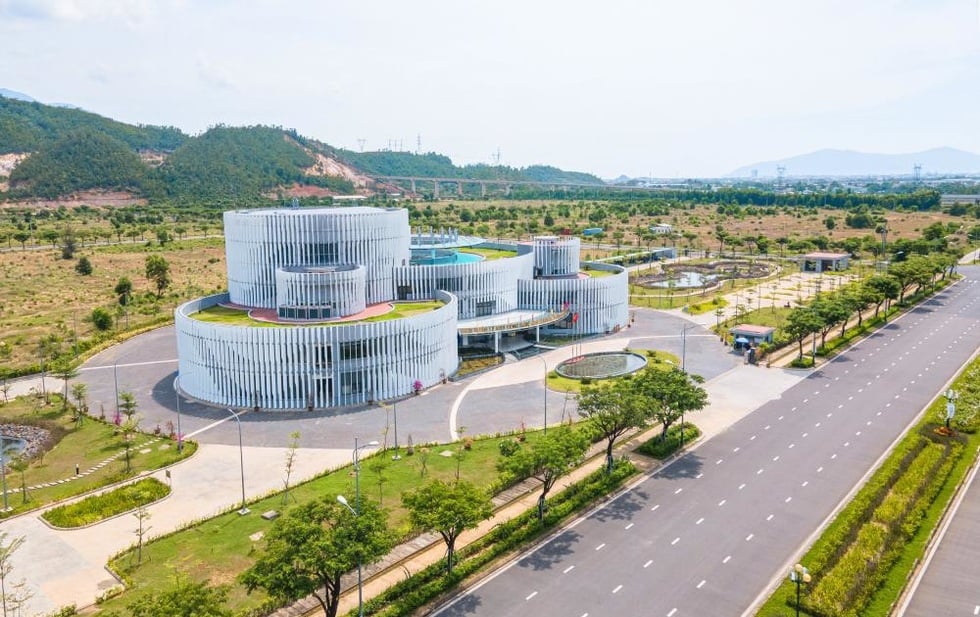
Da Nang High-Tech Park (Photo: ST).
The lack of infrastructure for prototyping and scaling up means that many innovation initiatives remain at the lab stage. This not only hinders efforts to commercialize research results, but also reduces Vietnam’s attractiveness for high-tech projects.
Some recommendations for strategic solutions to develop technology talent
Expand and deepen the high-tech talent pool
Vietnam needs to rapidly expand its talent pool and deepen its capabilities. This requires cultivating more local talent and attracting and retaining experts from abroad.
Key recommendations include:
National Postgraduate Scholarships: Implement a scholarship program to support students and young researchers participating in priority high-tech fields, sponsoring master's and doctoral students and industry-linked research projects.
Program to attract and retain global technology talent: Along with other policies such as the Excellent Lecturer Fund and Modern Training Program linked to business needs.
High-tech “university of excellence” program: Designate a small group of leading science and technology higher education institutions as “universities of excellence” under performance agreements. These agreements will ensure funding for laboratories, set ambitious targets for graduate education, and require strong collaboration with industry.
Building shared R&D infrastructure and pilots
Open access to facilitate higher education institutions and start-ups to use national laboratory facilities such as:
National Network of Centers of Excellence: Establish a network of national advanced research centers in key high-tech fields, serving as a focal point for bringing together research groups from higher education, public research institutes and private enterprises.
Pilot facilities for innovation: Investing in pilot-scale facilities to bridge the gap between research and production, allowing researchers and businesses to produce prototypes to test and refine processes.
High-tech Infrastructure Fund: Tapping the newly established National Investment Support Fund to co-finance R&D infrastructure and innovation projects, through which consortia of HEIs, research institutes and enterprises can request matching support to set up joint laboratories or develop new technologies.
Promoting linkages between higher education institutions - enterprises - Government and the spillover effects of FDI
There is an urgent need to connect and align the interests of all parties so that knowledge can flow and innovation can spread. Some suggestions include:
Converging technology clusters: Promote the formation of high-tech innovation zones, where higher education institutions, research institutes and enterprises are located together. Each cluster will specialize in a group of related high-tech fields to promote the exchange of talents and ideas.
Industry-Academic Talent Mobility Program : Establish formal mechanisms for talent exchange between the parties, facilitating dual appointments, short-term secondments and joint placements.
Vietnam Technology Innovation and Talent Alliance: Establish a co-funding platform to link multinational companies with domestic enterprises and higher education institutions to localize knowledge, strengthen supply chains and accelerate technology transfer.
This initiative could use matching grants linked to specific outputs such as the number of personnel trained and intellectual property shared.
Source: https://dantri.com.vn/cong-nghe/kien-tao-nen-mong-nhan-tai-de-viet-nam-tro-thanh-nuoc-thu-nhap-cao-20251009114920814.htm


![[Photo] Discover unique experiences at the first World Cultural Festival](https://vphoto.vietnam.vn/thumb/1200x675/vietnam/resource/IMAGE/2025/10/11/1760198064937_le-hoi-van-hoa-4199-3623-jpg.webp)







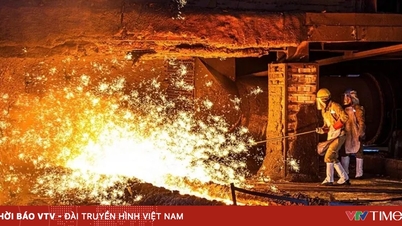



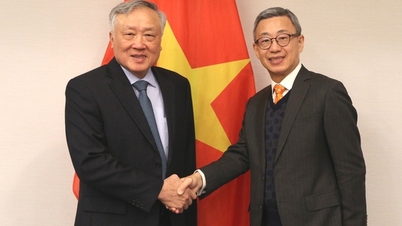

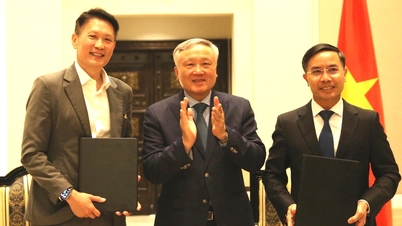




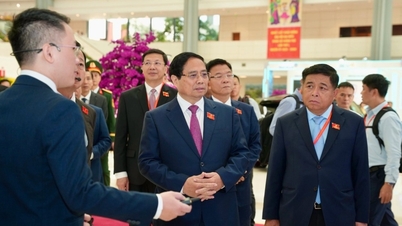

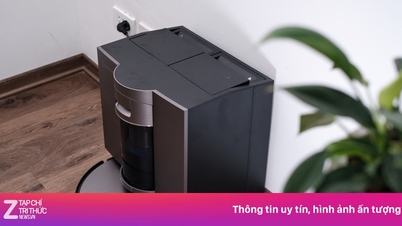

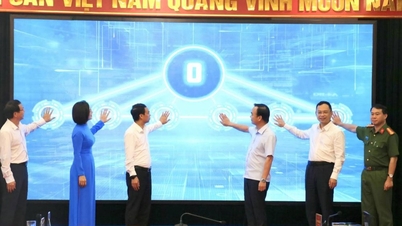






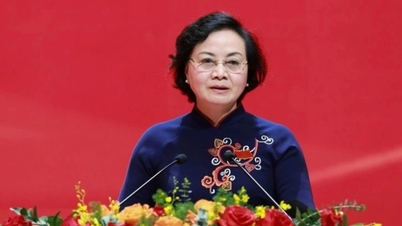
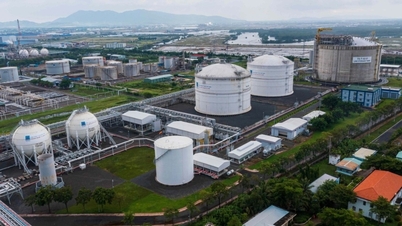

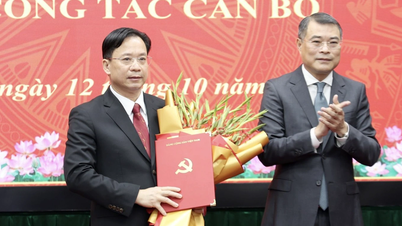






























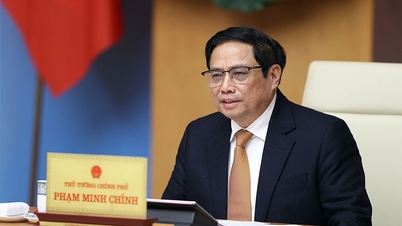


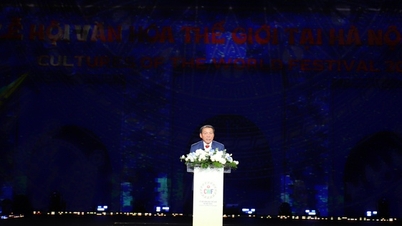


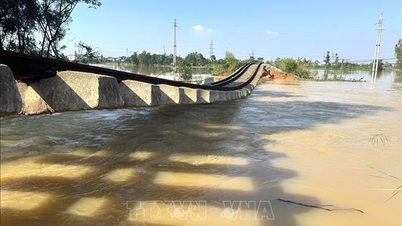

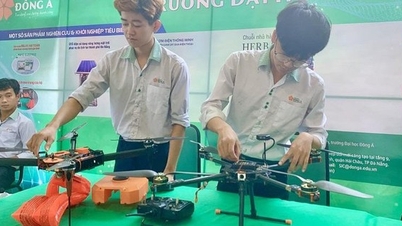
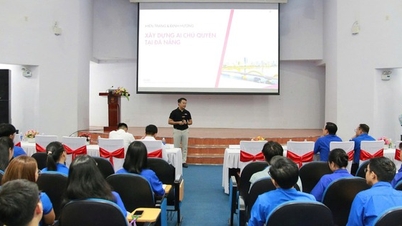
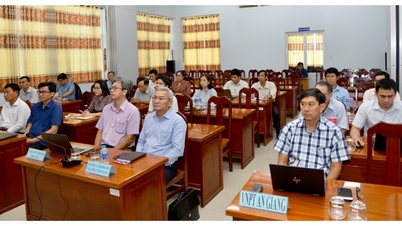


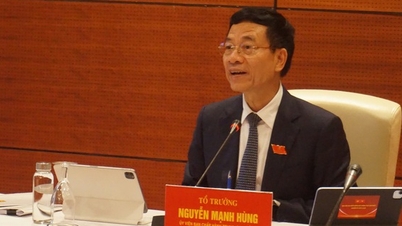
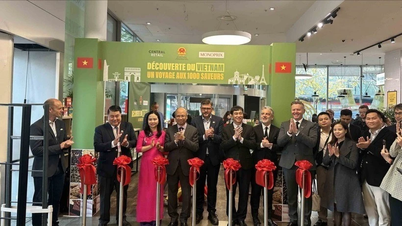




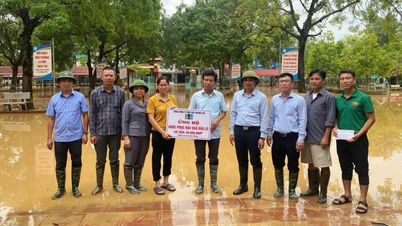
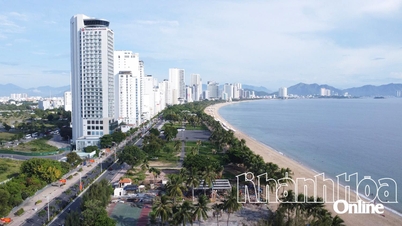

















Comment (0)